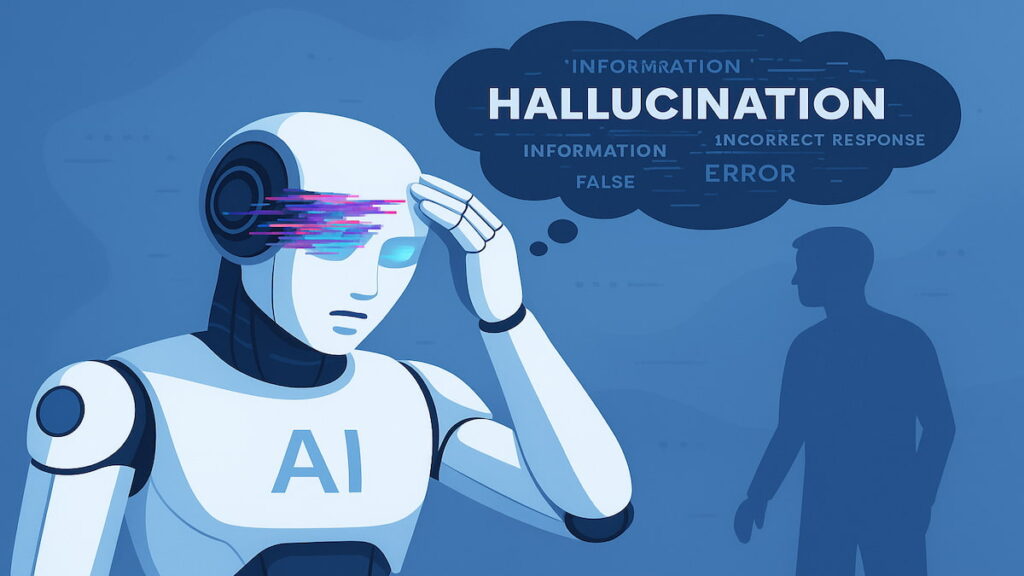When language models fabricate truth: AI hallucinations and the limits of trust
Hallucinations in AI can look like facts. Learn how flawed incentives and vague prompts create dangerous illusions.

AI has come far from rule-based systems and chatbots with preset answers. Large language models (LLMs), powered by vast amounts of data and statistical prediction, now generate text that can mirror human speech, mimic tone, and simulate expertise, but also produce convincing hallucinations that blur the line between fact and fiction.
From summarising policy to drafting contracts and responding to customer queries, these tools are becoming embedded across industries, governments, and education systems.
As their capabilities grow, so does the underlying problem that many still underestimate. These systems frequently produce convincing but entirely false information. Often referred to as ‘AI hallucinations‘, such factual distortions pose significant risks, especially when users trust outputs without questioning their validity.
Once deployed in high-stakes environments, from courts to political arenas, the line between generative power and generative failure becomes more challenging to detect and more dangerous to ignore.
When facts blur into fiction
AI hallucinations are not simply errors. They are confident statements presented as facts, even based on probability. Language models are designed to generate the most likely next word, not the correct one. That difference may be subtle in casual settings, but it becomes critical in fields like law, healthcare, or media.
One such example emerged when an AI chatbot misrepresented political programmes in the Netherlands, falsely attributing policy statements about Ukraine to the wrong party. However, this error spread misinformation and triggered official concern. The chatbot had no malicious intent, yet its hallucination shaped public discourse.
Mistakes like these often pass unnoticed because the tone feels authoritative. The model sounds right, and that is the danger.

Why large language models hallucinate
Hallucinations are not bugs in the system. They are a direct consequence of the way how language models are built. Trained to complete text based on patterns, these systems have no fundamental understanding of the world, no memory of ‘truth’, and no internal model of fact.
A recent study reveals that even the way models are tested may contribute to hallucinations. Instead of rewarding caution or encouraging honesty, current evaluation frameworks favour responses that appear complete and confident, even when inaccurate. The more assertive the lie, the better it scores.
Alongside these structural flaws, real-world use cases reveal additional causes. Here are the most frequent causes of AI hallucinations:
- Vague or ambiguous prompts
- Lack of specificity forces the model to fill gaps with speculative content that may not be grounded in real facts.
- Overly long conversations
- As prompt history grows, especially without proper context management, models lose track and invent plausible answers.
- Missing knowledge
- When a model lacks reliable training data on a topic, it may produce content that appears accurate but is fabricated.
- Leading or biassed prompts
- Inputs that suggest a specific answer can nudge the model into confirming something untrue to match expectations.
- Interrupted context due to connection issues
- Especially with browser-based tools, a brief loss of session data can cause the model to generate off-track or contradictory outputs.
- Over-optimisation for confidence
- Most systems are trained to sound fluent and assertive. Saying ‘I don’t know’ is statistically rare unless explicitly prompted.
Each of these cases stems from a single truth. Language models are not fact-checkers. They are word predictors. And prediction, without verification, invites fabrication.
The cost of trust in flawed systems
Hallucinations become more dangerous not when they happen, but when they are believed.
Users may not question the output of an AI system if it appears polished, grammatically sound, and well-structured. This perceived credibility can lead to real consequences, including legal documents based on invented cases, medical advice referencing non-existent studies, or voters misled by political misinformation.
In low-stakes scenarios, hallucinations may lead to minor confusion. In high-stakes contexts, the same dynamic can result in public harm or institutional breakdown. Once generated, an AI hallucination can be amplified across platforms, indexed by search engines, and cited in real documents. At that point, it becomes a synthetic fact.
Can hallucinations be fixed?
Some efforts are underway to reduce hallucination rates. Retrieval-augmented generation (RAG), fine-tuning on verified datasets, and human-in-the-loop moderation can improve reliability. Still, no method has eliminated hallucinations.
The deeper issue is how language models are rewarded, trained, and deployed. Without institutional norms prioritising verifiability and technical mechanisms that can flag uncertainty, hallucinations will remain embedded in the system.
Even the most capable AI models must include humility. The ability to say ‘I don’t know’ is still one of the rarest responses in the current landscape.

Hallucinations won’t go away. Responsibility must step in.
Language models are not truth machines. They are prediction engines trained on vast and often messy human data. Their brilliance lies in fluency, but fluency can easily mask fabrication.
As AI tools become part of our legal, political, and civic infrastructure, institutions and users must approach them critically. Trust in AI should never be passive. And without active human oversight, hallucinations may not just mislead; they may define the outcome.
Would you like to learn more about AI, tech and digital diplomacy? If so, ask our Diplo chatbot!

